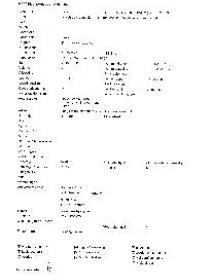Longitudinal measures of hostility in deployed military personnel
Increases in anger and hostility are commonly found after military deployment. However, it is unknown how anger and hostility develop over time, and which veterans are more at risk for developing these complaints. Data of 745 veterans one month before deployment to Afghanistan and one, six, twelve and 24 months after deployment were analyzed in a growth model. Growth mixture modeling revealed four classes based on their growth in hostility. Most of the participants belonged to a low-hostile group or a mild-hostile group that remained stable over time. Two smaller groups were identified that displayed increase in hostility ratings after deployment. The first showed an immediate increase after deployment. The second showed a delayed increase between twelve and 24 months after deployment. No groups were identified that displayed a decrease of hostility symptoms over time. Multinomial logistic regression was applied to predict group membership by age, education, early trauma, deployment stressors and personality factors. This study gains more insight into the course of hostility over time, and identifies risk factors for the progression of hostility.
Geachte bezoeker,
De informatie die u nu opvraagt, kan door psychotraumanet niet aan u worden getoond. Dit kan verschillende redenen hebben,
waarvan (bescherming van het) auteursrecht de meeste voorkomende is. Wanneer het mogelijk is om u door te verwijzen naar de bron
van deze informatie, dan ziet u hier onder een link naar die plek.
Als er geen link staat, kunt u contact opnemen met de bibliotheek,
die u verder op weg kan helpen.
Met vriendelijke groet,
Het psychotraumanet-team.
Reference:
Lieke Heesink, Arthur Rademaker, Eric Vermetten, Elbert Geuze, & Rolf Kleber | 2015
In: Psychiatry research, ISSN 0165-1781 | 29 | 1-2 | september | 479–484
http://www.psy-journal.com/article/S0165-1781(15)00395-9/pdf
In: Psychiatry research, ISSN 0165-1781 | 29 | 1-2 | september | 479–484
http://www.psy-journal.com/article/S0165-1781(15)00395-9/pdf


